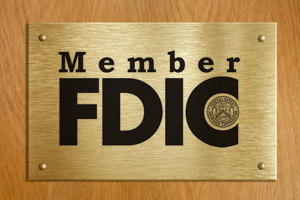Alpine Bank is FDIC-insured, but what does that mean? Recent issues in the banking industry emphasize the need to bank with a trusted partner
Recently the news has been filled with stories about two large banks being closed by federal regulators. Both banks had a high concentration of tech industry businesses, and start-ups, that comprised a majority of its deposit balances.
One of the banks had a high percentage of “uninsured” deposits – deposits above the $250,000 government-insured limit. In one, the uninsured deposits accounted for 94% of its total.
This can be scary language to most of us, and it raises all sorts of questions. What does “uninsured deposits” mean? What about my bank, and my money? What is the “government limit”?
Fortunately, the Treasury Department, Federal Reserve and FDIC jointly stated the full deposits of the two failed banks will be covered by FDIC insurance. No depositors will lose any money.
Checking out your bank
For this reason — among others — prominent news and information outlets such as Good Morning America and CNN have advised their viewers and listeners to check the stability of their own banks. This is, of course, good advice at any time, regardless of whether there is a high-profile bank failure.
As another article in USA Today observes:
More people are wondering just how safe their money is in a bank after the recent collapse of the two large banks.
Online searches are on the increase, with people questioning if their bank could be the next to fail.
What about Alpine Bank? Are deposits insured? The simple answer is “yes”!
Understandably, many of Alpine Bank’s customers are asking questions about how secure their deposits are with Alpine Bank.
First, we would urge all of our depositors to remember that Alpine Bank is indeed FDIC Insured.
Alpine Bank President Glen Jammaron, in this recent Durango Herald article, speaks to how Alpine Bank brings in deposits from a very broad spectrum of customers, both individuals and businesses in our local communities, and that we don’t rely solely on one volatile industry.
And Susan Graf, Alpine Bank Boulder VP of regional development, had this to say in the Boulder Daily Camera: “The FDIC works really well. What I think people don’t realize is that it’s not taxpayer funded. Banks pay into it. It was created in 1933, and it’s worked in every instance as it’s intended.”
You can verify any bank’s FDIC status by visiting their website and searching using the special “Bank Find” tool that they have here: https://banks.data.fdic.gov/bankfind-suite/
For example, Alpine Bank’s FDIC Insured status can be verified here: https://banks.data.fdic.gov/bankfind-suite/bankfind/details/23091
(By the way, the FDIC profile page has lots of other valuable information on any bank or financial institution that is a member, such as history, registration numbers and more.)
We understand that in challenging financial times having a trusted banking partner is crucial not only to your financial security, but also to your peace of mind. Please reach out to any Alpine Bank branch or contact us online if you have follow-up questions. Our goal is to put your mind at ease and help you get the best night’s sleep possible — at least when it comes to having Alpine Bank as a trusted partner.

